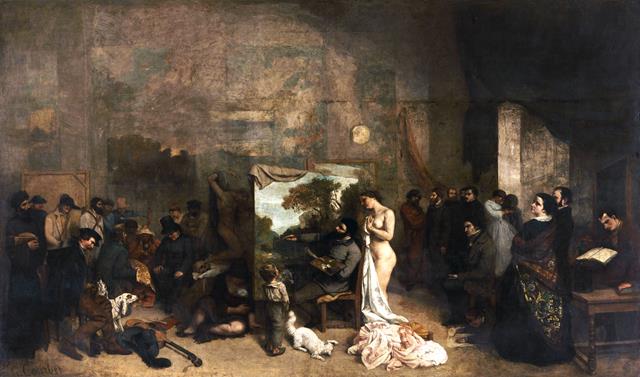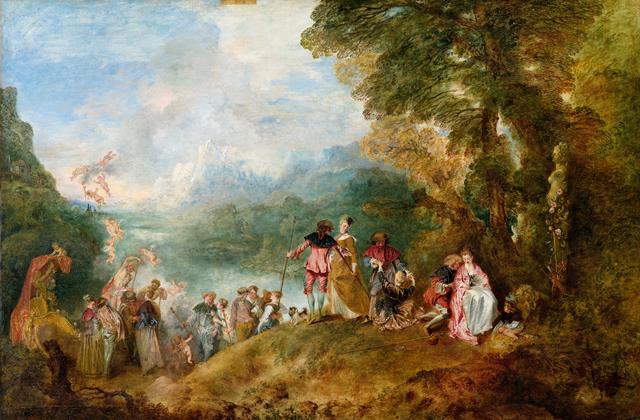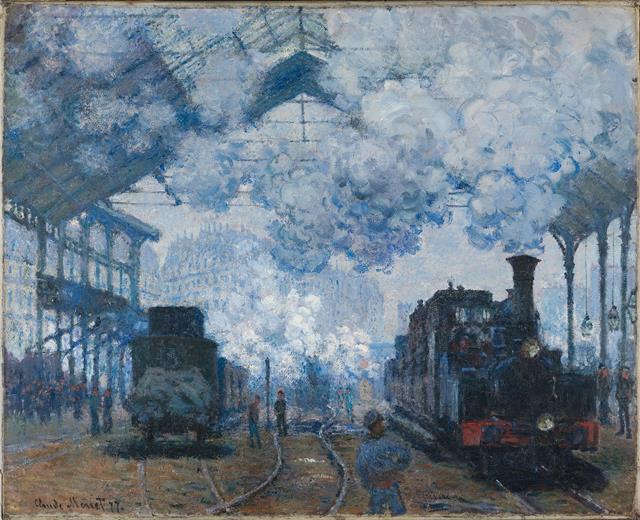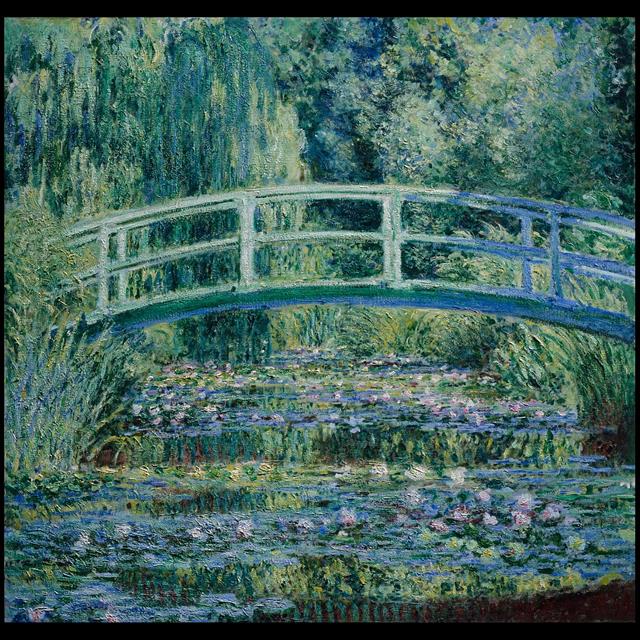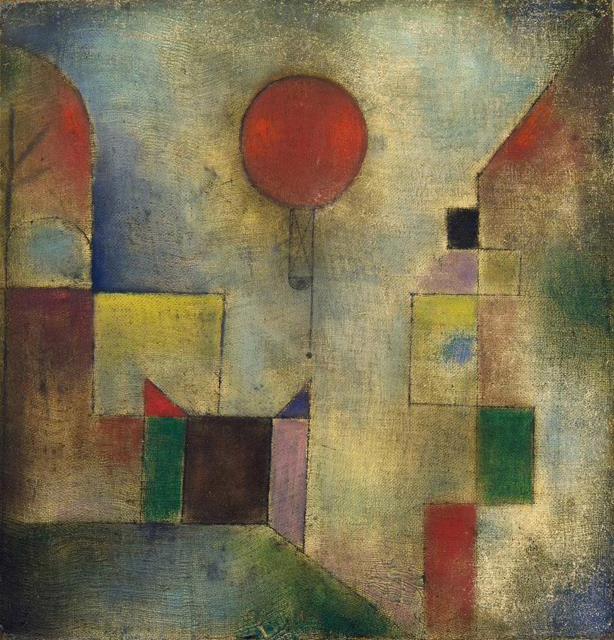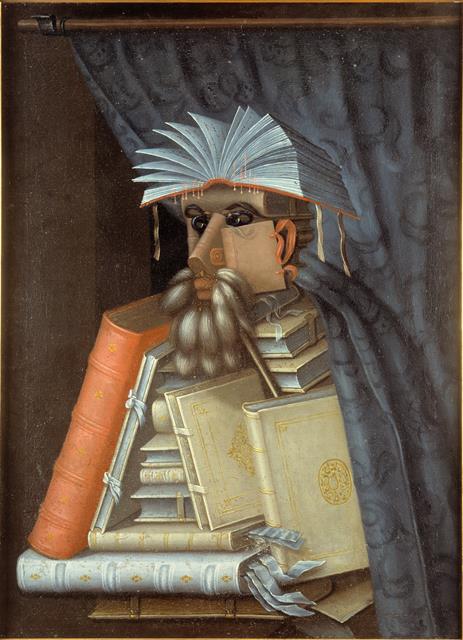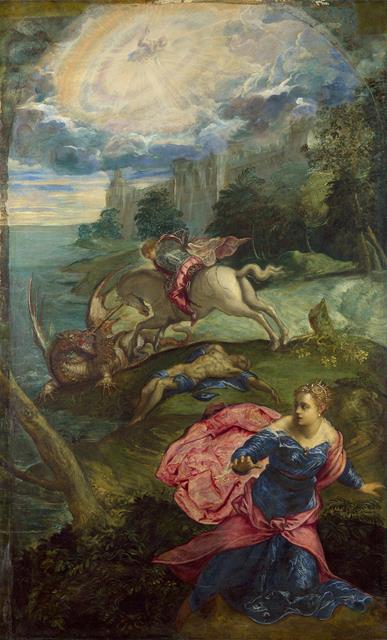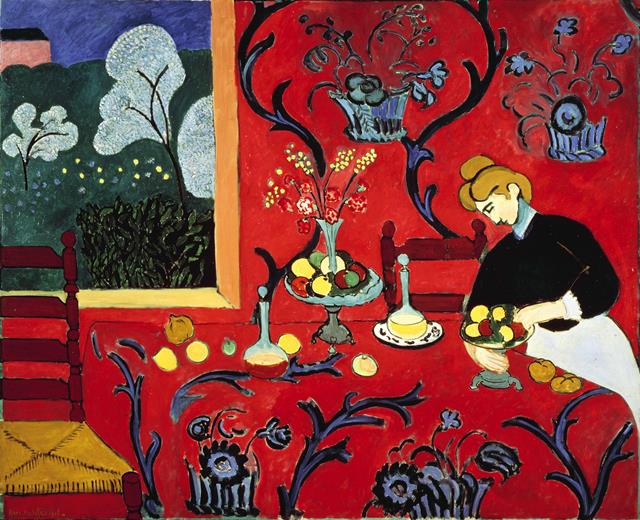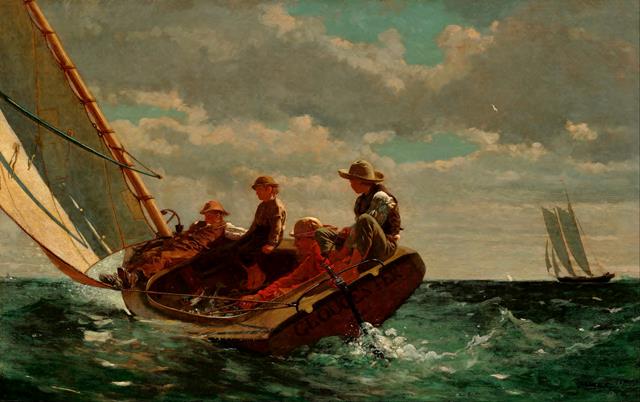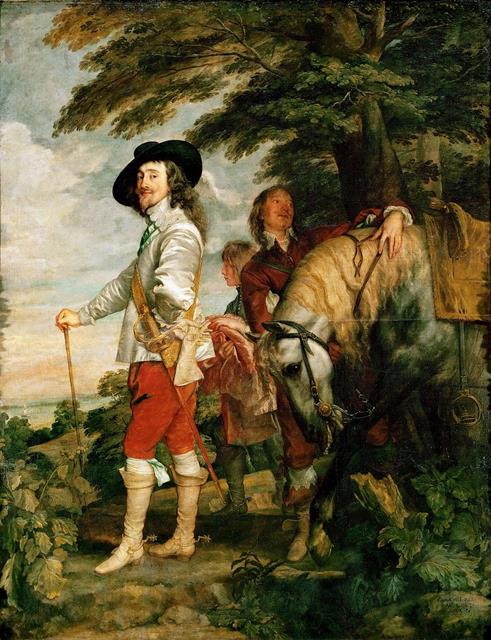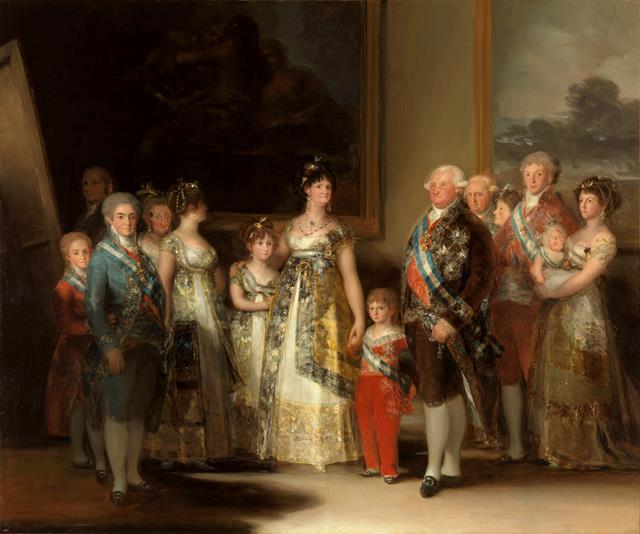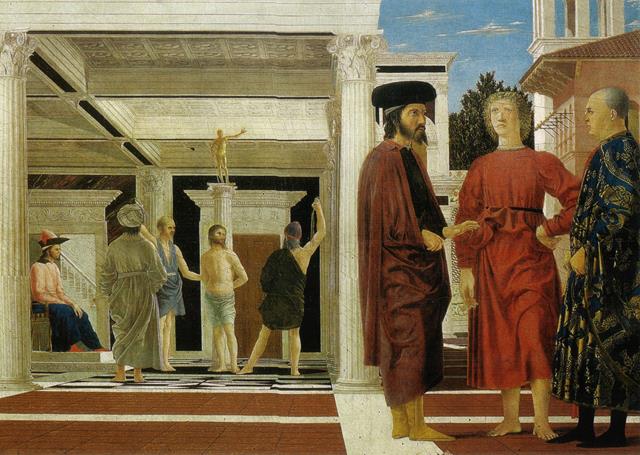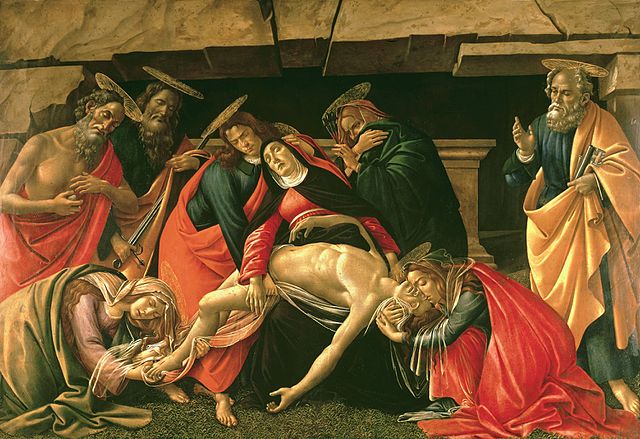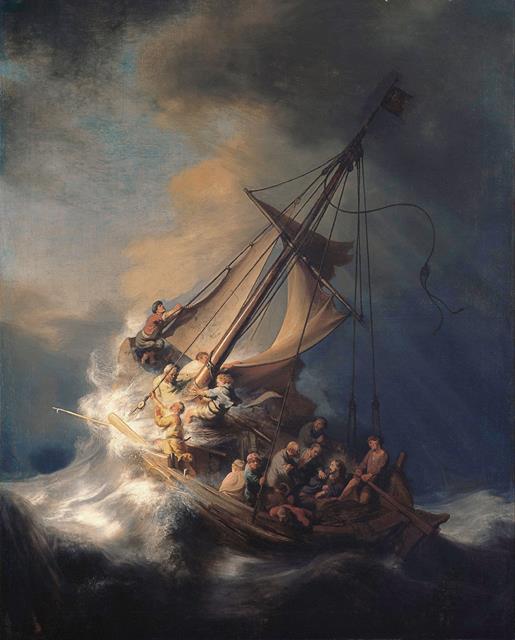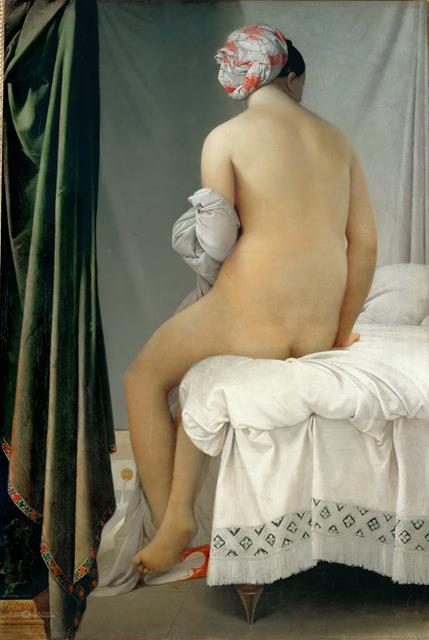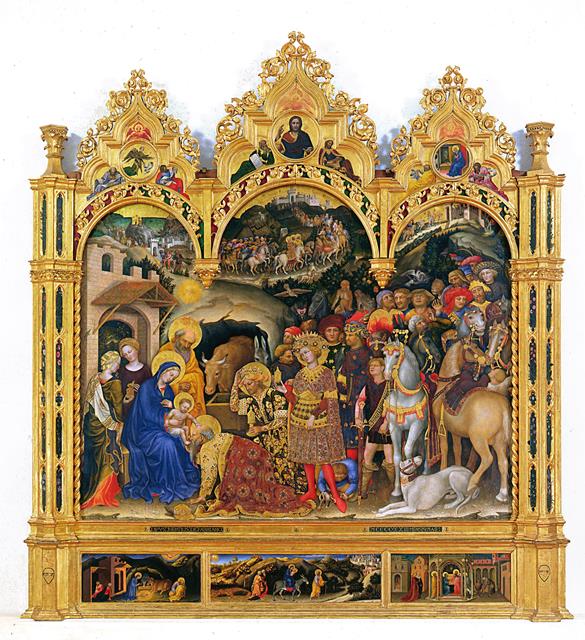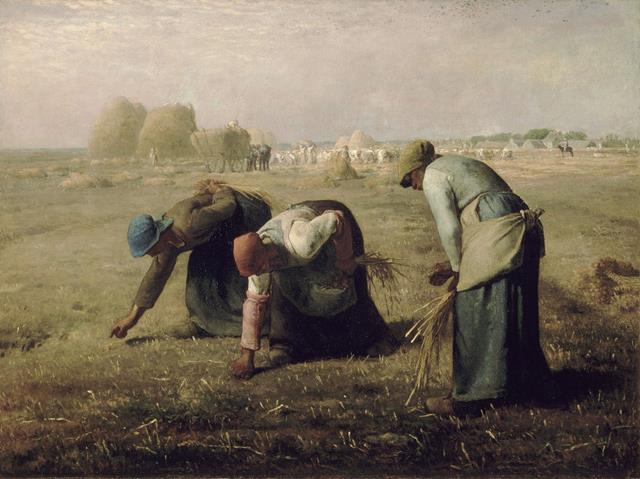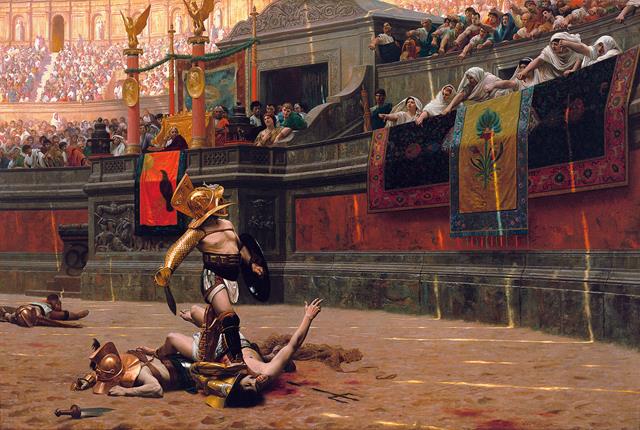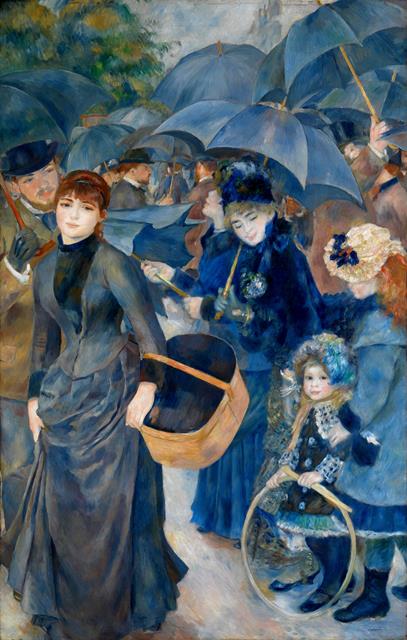Discover the Finest Artworks: Top 200 Paintings Worldwide (#150–126)
Explore our meticulously researched compilation showcasing the 200 greatest paintings globally.
Each painting is accompanied by comprehensive details, including size, location, materials used, its frequency in experts' lists, and our own rating.
Table of Contents
ToggleCurrently you are exploring #150–126.
Click on the following links to discover #200–176, #175–151, #150–126, #125–101, #100–76, #75–51, #50–25, #24–1 of our list of the 200 best paintings in the world.
Our list is curated through an in-depth analysis of over 20 influential art books in various languages and multiple reputable sources.
Uncover our methodology and the selected art books behind this definitive top 200 list by clicking here here.
#150 | Gustave Courbet, "The Studio of the Painter, a Real Allegory"
Demonstrates Courbet's Technical Mastery and His Desire to Challenge the Artistic Norms of His Time
Through "The Studio," Courbet not only showcased his technical skill but also advanced the Realist agenda, asserting the artist's role as a social commentator and provocateur.
At its core, the large scale painting celebrates the artist's autonomy and his commitment to portraying the world as he sees it, unencumbered by idealized or romanticized notions.
Courbet deliberately included recognizable figures from various walks of life, representing his commitment to depicting the truth of contemporary society.
Date: 1855
Dimensions: 359 cm × 598 cm (141 in × 235 in) | extremely large
Material: Oil on canvas
Collection: Musée d'Orsay, Paris 🇫🇷
Art Movement: Realism, School of Barbizon, French 🇫🇷
Experts’ Choice: 14x
Our Score: 5.50
#149 | Jean-Antoine Watteau, "The Pilgrimage to Cythera" (Louvre Version)
A Masterpiece of Rococo Elegance and Storytelling
"The Pilgrimage to Cythera" captures the essence of Rococo elegance and the whimsical themes of love and romance.
The painting depicts a group of elegantly dressed couples in a lush, idyllic landscape, seemingly embarking on a journey to the mythical island of Cythera, the birthplace of Venus, the goddess of love.
Despite its idyllic appearance, the painting also hints at the transience of love and desire, as the figures seem to be departing from the island rather than arriving.
Date: 1877
Dimensions: 129 x 194 cm (50.7 x 76.3 in) | very large
Material: Oil on canvas
Collection: Musée du Louvre, Paris 🇫🇷
Art Movement: Rococo, French 🇫🇷
Experts’ Choice: 15x
Our Score: 5.50
#148 | Claude Monet Gare Saint-Lazare, "Arrival of a Train" (Boston Version)
Monet’s Innovative Approach to Capturing the Effects of Industrialization on Society
The painting captures the energy and dynamism of a bustling railway station during the Industrial Revolution, symbolizing the rapid technological advancements and societal changes of the era.
The blurred figures on the platform and the billowing steam from the locomotive convey a sense of motion and anticipation, inviting contemplation on the human experience within the context of progress and innovation.
Monet's impressionistic brushwork infuses the scene with a sense of vitality and movement.
Date: 1877
Dimensions: 80 x 98 cm (31.4 x 38.5 in) | large
Material: Oil on canvas
Collection: Fogg Art Museum Cambridge (Boston) 🇺🇸
Art Movement: Impressionism, French 🇫🇷
Experts’ Choice: 3x (10x all version)
Our Score: 5.50
#147 | Claude Monet, "The Japanese Bridge (Princeton Version)"
A World Where Nature and Art Converge Effortlessly
The painting is celebrated for its exquisite depiction of the famous Japanese bridge in Monet's iconic garden at Giverny, showcasing his mastery of capturing the play of light and reflections on water surfaces.
Monet's use of bold and vibrant colors, applied in short, expressive brushstrokes, creates a sense of dynamism and immediacy, drawing the viewer into the scene.
The painting is part of a series of works Monet produced featuring the Japanese bridge, each capturing different atmospheric conditions and times of day, highlighting his commitment to capturing the ephemeral qualities of light and nature.
Date: 1899
Dimensions: 90.5 x 89.7 cm (35.3 x 35.8 in) | large
Material: Oil on canvas
Collection: Princeton University Art Museum, Princeton, New Jersey 🇺🇸
Art Movement: Impressionism, French 🇫🇷
Experts’ Choice: 3x (10x including all similar versions)
Our Score: 5.60
#146 | Paul Klee, "Red Balloon"
Blending Abstract and Figurative Elements Seamlessly
The essence of "Red Balloon" lies in its ability to capture the fleeting moments of childhood joy and innocence, symbolized by the titular balloon soaring freely against the backdrop of a vast, open sky.
It embodies a sense of liberation and escapism, inviting viewers to momentarily escape the constraints of reality and embrace the boundless possibilities of imagination.
A crimson balloon dances gracefully across a canvas of muted hues, its vibrant presence commanding attention.
Date: 1922
Dimensions: 31.8 x 31.1 cm (12.5 x 12.2 in) | very small
Material: Oil on gauze
Collection: Solomon R. Guggenheim Museum, New York City 🇺🇸
Art Movement: Cubism/Expressionism, German-Swiss 🇩🇪/🇨🇭
Experts’ Choice: 5x
Our Score: 5.60
#145 | Giuseppe Arcimboldo, "The Librarian"
Arcimboldo's Visionary Approach to Portraiture Reshapes Art History
"The Librarian" is not just a simple portrait; it's a visual puzzle that encourages viewers to decipher its symbolic language.
The painting depicts a face constructed entirely from books, manuscripts, and other symbols of learning, embodying the idea that wisdom is fundamental to the human experience.
Arcimboldo's use of everyday objects to construct the face challenges the conventional boundaries of portraiture, making it a groundbreaking work for its time.
Date: 1566
Dimensions: 97 cm × 71 cm (38 in × 28 in) | large
Material: Oil on canvas
Collection: Skokloster Castle Håbo Municipality, Sweden 🇸🇪
Art Movement: Mannerism, Italian 🇮🇹
Experts’ Choice: 5x
Our Score: 5.60
#144 | Tintoretto (Jacopo Robusti Tintoretto), "St George and the Dragon"
Immortalizes the Timeless Battle between Good and Evil in a Highly Dynamic Composition
The painting effectively captures the heroic narrative of St. George's triumph over evil, resonating with viewers on both emotional and spiritual levels.
Its highly dynamic composition and skilled execution captivate viewers, offering a glimpse into the artist's genius.
Despite its seemingly traditional subject matter, 'St George and the Dragon' reflects Tintoretto's progressive artistic vision, characterized by bold experimentation and daring narrative choices.
Date: 1558
Dimensions: 157.5 cm × 100 cm (62.0 in × 39 in) | very large
Material: Oil on canvas
Collection: National Gallery, London 🇬🇧
Art Movement: Mannerism, Venetian School, Italian 🇮🇹
Experts’ Choice: 6x
Our Score: 5.60
#143 | Katsushika Hokusai, "The Great Wave off Kanagawa"
A Timeless Reminder of Humanity’s Relationship with the Natural World, Invoking a Sense of Awe and Respect for Its Power
The central focus of the painting is the colossal wave crashing down upon small fishing boats, conveying a sense of danger and urgency.
Yet, amidst this chaos, Mount Fuji stands tall and majestic in the distance, symbolizing stability and resilience.
The painting is part of Hokusai's series "Thirty-six Views of Mount Fuji," which consists of landscape prints created between 1830 and 1833.
Date: c. 1829–1833
Dimensions: 25.7 cm × 37.8 cm (10.1 in × 14.9 in) | small
Material: Woodblock print, ink
Collection: Metropolitan Museum of Art, New York City 🇺🇸
Art Movement: Ukiyo-e, Japanese 🇯🇵
Experts’ Choice: 6x
Our Score: 5.60
#142 | John William Waterhouse, "The Lady of Shalott"
Captures the Romance and Melancholy of Tennyson's Poem
"The Lady of Shalott" was inspired by Alfred, Lord Tennyson's poem of the same name, which recounts the tragic tale of a cursed maiden confined to a tower.
Waterhouse's interpretation of the subject matter emphasizes the Lady's isolation and longing for freedom, capturing the tension between her inner desires and external constraints.
The painting not only makes us feel close to everyday life at home but also shows van Gogh's talent for turning ordinary things into extraordinary art.
Date: 1888
Dimensions: 183 cm × 230 cm (72 in × 91 in) | very large
Material: Oil on canvas
Collection: Tate Britain, London 🇬🇧
Art Movement: Pre-Raphaelite, British 🇬🇧
Experts’ Choice: 6x
Our Score: 5.60
#141 | Hugo van der Goes, "The Adoration of the Kings (Monforte Altarpiece)"
A Masterpiece of the Northern Renaissance, Capturing the Essence of Christian Belief with Unrivaled Beauty and Poignancy
"The Adoration of the Kings (Monforte Altarpiece)" encapsulates the essence of the Nativity scene, portraying the moment when the three wise men, or kings, present gifts to the infant Jesus, acknowledging him as the prophesied savior.
Through his use of perspective and spatial arrangement, Van der Goes creates a sense of movement and dynamism, inviting viewers to journey through the painting and engage with its narrative on a deeper level.
The painting's exquisite craftsmanship and attention to detail reflect the artist's mastery of his craft, earning it a place among the greatest works of art in history.
Date: c. 1470
Dimensions: 147 cm × 242 cm (58 in × 95 in) | very large
Material: Oil on wood
Collection: Gemäldegalerie, Berlin 🇩🇪
Art Movement: Early Netherlandish Renaissance, Dutch 🇳🇱
Experts’ Choice: 8x
Our Score: 5.60
#140 | Henri Matisse, "Harmony in Red (The Red Room)"
A Testament to Matisse’s Unrivaled Mastery of Color Theory and His Enduring Legacy as a Pioneer of Modern Art
"Harmony in Red" is celebrated as a top 200 painting globally for its revolutionary approach to color theory, where Matisse skillfully manipulates red tones to create a harmonious yet intense visual experience.
Its composition, characterized by flattened perspective and geometric shapes, challenges traditional notions of space and depth in painting, pushing the boundaries of artistic expression.
"Harmony in Red" was originally intended as part of a series of decorative panels for the dining room of a Russian art collector, Sergey Shchukin, but it eventually became a standalone masterpiece.
Date: 1908
Dimensions: 180 cm × 220 cm (70.9 in × 86.6 in) | very large
Material: Oil on canvas
Collection: State Hermitage Museum, St. Petersburg 🇷🇺
Art Movement: Fauvism/Modernisme, French 🇫🇷
Experts’ Choice: 8x
Our Score: 5.60
#139 | Winslow Homer, “Breezing Up (A Fair Wind)”
Immerses Viewers in the Drama of Maritime Life
The essence of Winslow Homer's "Breezing Up (A Fair Wind)" lies in its portrayal of the timeless struggle between humanity and the elements of nature.
Set against the backdrop of a turbulent sky and choppy seas, the painting depicts a group of boys joyfully sailing a small boat.
Yet, amidst their laughter and excitement, there's a sense of determination and resilience in their faces as they navigate the unpredictable waters.
Date: 1873–76
Dimensions: 61.5 cm × 97 cm (24.2 in × 38 in) | large
Material: Oil on canvas
Collection: National Gallery of Art, Washington 🇺🇸
Art Movement: Realism, American 🇺🇸
Experts’ Choice: 10x
Our Score: 5.60
#138 | Sir Anthony van Dyck, “Charles I: King of England at the Hunt”
A Subtle Compromise between Gentlemanly Nonchalance and Regal Assurance
The painting's ability to portray the grandeur and regal presence of King Charles I elevates it to the ranks of the most esteemed artworks in history.
It depicts Charles in civilian clothing and standing next to a horse as if resting on a hunt, in a manner described by the Louvre as a "subtle compromise between gentlemanly nonchalance and regal assurance".
Van Dyck also reflects the cultural significance of hunting in 17th-century England, where it was associated with nobility and aristocratic leisure.
Date: 1635
Dimensions: 280 cm × 336 cm (110 in × 132 in) | very large
Material: Oil on canvas
Collection: Musée du Louvre, Paris 🇫🇷
Art Movement: Baroque, Flemish 🇧🇪
Experts’ Choice: 11x
Our Score: 5.60
#137 | Francisco de Goya y Lucientes, "Family of Carlos IV"
Through His Artistry, Goya Transcends Mere Portraiture, Infusing the Painting with Depth, Meaning, and Historical Significance
Goya masterfully captures the personalities and relationships within the royal family, showcasing their power and dynamics through subtle gestures and expressions.
Goya's decision to depict the royal family in a candid and unflattering light was a bold departure from traditional royal portraiture, sparking controversy and speculation.
Interestingly, Goya himself appears in the background of the painting, gazing out at the viewer, perhaps offering a subtle commentary on his own position within the court.
Date: 1800–1801
Dimensions: 280 cm × 336 cm (110 in × 132 in) | very large
Material: Oil on canvas
Collection: Museo Nacional del Prado, Madrid 🇪🇸
Art Movement: Romanticism, Spanish 🇪🇸
Experts’ Choice: 11x
Our Score: 5.60
#136 | Piero della Francesca, "The Flagellation of Christ"
Timeless Elegance and Skillful Use of Perspective
Piero della Francesca employed mathematical principles in his art, evident in the precise geometric forms and proportions present in "The Flagellation of Christ."
Its skillful use of perspective draws the viewer into the scene, creating a sense of immersion and depth that is unparalleled.
The meticulous attention to detail, from the folds of fabric to the expressions on the faces of the figures, demonstrates Piero's unparalleled technical expertise and artistic vision.
Date: probably 1468–1470
Dimensions: 58.4 cm × 81.5 cm (23.0 in × 32.1 in) | medium-sized
Material: Oil and tempera
Collection: Galleria Nazionale del Marche, Urbino 🇮🇹
Art Movement: Early Renaissance, Italian 🇮🇹
Experts’ Choice: 12x
Our Score: 5.60
#135 | Joseph Wright of Derby, "Experiment with a Bird in an Air Pump"
A Timeless Reminder of the Tension between Progress and Ethics
The central theme of the painting revolves around the conflict between scientific curiosity and ethical considerations, as represented by the tension between the figures conducting the experiment and the distress of the bird.
The painting's composition is carefully crafted to draw attention to the central elements of the scene—the illuminated figures, the bird in distress, and the fascinated onlookers—creating a sense of movement and narrative progression.
Over the centuries, "Experiment with a Bird in an Air Pump" has become an iconic symbol of the Enlightenment's pursuit of knowledge and the ethical dilemmas inherent in scientific progress, securing its place as one of the most celebrated paintings in art history.
Date: 1768
Dimensions: 183 cm × 244 cm (72 in × 94+1⁄2 in) | very large
Material: Oil on canvas
Collection: National Gallery, London 🇬🇧
Art Movement: Romanticism, English 🇬🇧
Experts’ Choice: 14x
Our Score: 5.60
#134 | Edvard Munch, "Madonna" (Munch Museum Version)
A Juxtaposition of Beauty and Melancholy with A Revolutionary Viewpoint

The painting's title, "Madonna," alludes to religious iconography, yet Munch's portrayal of the figure challenges traditional representations of divine femininity, imbuing the work with a sense of ambiguity and tension.
At the heart of Edvard Munch's "Madonna" resides its evocative depiction of a enigmatic semi-nude woman, set against a backdrop of swirling hues and ethereal luminosity.
The viewer's viewpoint seems to be that of the person who is making love with her.
💡 The figure depicted in "Madonna" is believed to be inspired by Munch's recurring muse and lover, Dagny Juel, adding a personal dimension to the painting's enigmatic aura.
Date: 1894
Dimensions: 90 cm × 68 cm (35 in × 27 in) | large
Material: Oil on canvas
Collection: Munch Museum, Oslo 🇳🇴
Art Movement: Expressionism, Norwegian 🇳🇴
Experts’ Choice: 4x (12x including all similar versions)
Our Score: 5.70
#133 | Sandro Botticelli, “Lamentation over the Dead Christ”
Evokes Profound Grief and Sorrow
Botticelli's careful composition draws the viewer into the emotional intensity of the moment, evoking a sense of empathy and reflection.
Through his masterful technique and sensitive portrayal, Botticelli creates a timeless meditation on the themes of suffering, redemption, and the power of maternal love.
The painting was commissioned by the Vespucci family for their family chapel in the Church of Santa Maria Novella in Florence.
Date: 1490–1492
Dimensions: 140 cm × 207 cm (55 in × 81 in) | very large
Material: Tempera on panel
Collection: Alte Pinakothek, Munich 🇩🇪
Art Movement: Early Renaissance, Florentine School 🇮🇹
Experts’ Choice: 6x
Our Score: 5.70
#132 | Rembrandt Harmenszoon van Rijn, “The Storm on the Sea of Galilee”
Rembrandt's Stolen Seascape Leaves the Art World in Disarray
"The Storm on the Sea of Galilee" was painted by Rembrandt in 1633 and is his only seascape.
It depicts the biblical story of Jesus calming the storm on the Sea of Galilee, as recounted in the New Testament.
Sadly, the painting was stolen in 1990 from the Isabella Stewart Gardner Museum in Boston and remains missing to this day, making it one of the most famous unsolved art thefts in history.
💡 One disciple vomits overboard, while another, facing the viewer, is a self-portrait of the artist. Only Christ, on the right, remains calm.
Date: 1452
Dimensions: 160 cm × 128 cm (63.00 in × 50.39 in) | very large
Material: Oil on canvas
Collection: Palazzo Pitti, Florence 🇮🇹
Art Movement: Early Renaissance, Florentine School 🇮🇹
Experts’ Choice: 7x
Our Score: 5.5
#131 | William Hogarth, "Marriage A-la-Mode: The Tête à Tête"
A Biting Critique of the Arranged Marriages and Societal Decadence Prevalent in 18th-Century England
The painting captures the complexities of marriage, wealth, and moral decay in 18th-century English society, offering a scathing portrayal of the consequences of loveless unions and the pursuit of social status.
"Marriage A-la-Mode" was created by William Hogarth between 1743 and 1745 as a series of six paintings, each depicting a different stage in the ill-fated marriage of an aristocratic couple.
Date: 1743
Dimensions: 69.9 cm × 90.8 cm (27.5 in × 35.7 in) | large
Material: Oil on canvas
Collection: National Gallery, London 🇬🇧
Art Movement: Rococo, English 🇬🇧
Experts’ Choice: 10x
Our Score: 5.70
#130 | Jean-Auguste-Dominique Ingres, "Bather of Valpincon"
The Bather, Poised in Contemplation, Embodies a Timeless Elegance and Grace
Ingres' decision to depict the bather in a state of undress was a departure from traditional academic conventions of the time, sparking both controversy and fascination.
The painting exudes a sense of tranquility and intimacy, as the bather appears lost in thought, her expression conveying a mixture of contemplation and serenity.
Despite its seemingly straightforward subject matter, the painting invites interpretation and speculation, with scholars and art enthusiasts pondering the meaning behind the bather's enigmatic expression.
Date: 1808
Dimensions: 146 cm × 97.5 cm (57 in × 38.4 in) | large
Material: Oil on canvas
Collection: Musée du Louvre, Paris 🇫🇷
Art Movement: Neoclassicism, French 🇫🇷
Experts’ Choice: 13x
Our Score: 5.70
#129 | Gentile da Fabriano, "Adoration of the Magi"
Radiates a Sense of Divine Majesty and Humility with Exquisite Attention to Detail
The painting is renowned for its exquisite portrayal of the Adoration scene, depicting the three Magi presenting gifts to the infant Jesus with reverence and humility.
The work is infused with rich symbolism, with each element carrying deep religious significance, from the celestial bodies in the sky to the symbolic gifts of gold, frankincense, and myrrh.
The painting is celebrated for its meticulous attention to detail, from the intricate patterns of the clothing to the subtle nuances of expression.
The golden frame, along with the painting, is a remarkable work of art in itself.
Date: 1423
Dimensions: 300 cm × 282 cm (120 in × 111 in) | extremely large
Material: Tempera on panel
Collection: Galleria degli Uffizi, Florence 🇮🇹
Art Movement: International Gothic 🇮🇹
Experts’ Choice: 14x
Our Score: 5.70
#128 | Jean-Francois Millet, "The Gleaners"
Encapsulates the Essence of Rural Poverty and the Resilience of the Working Class
Millet himself was a peasant before becoming an artist, lending authenticity and empathy to his depictions of rural labor.
"The Gleaners" sparked debates about social inequality and the treatment of the working class when it was first exhibited, reflecting the artist's commitment to social justice.
Despite its initial controversy, the painting is now regarded as one of the defining works of the Realist movement in art history.
Date: 1857
Dimensions: 83.8 cm × 111.8 cm (33 in × 44 in) | large
Material: Oil on canvas
Collection: Musée d'Orsay Paris 🇫🇷
Art Movement: Realism, French 🇫🇷
Experts’ Choice: 15x
Our Score: 5.70
#127 | Jean-Léon Gérôme, "Pollice Verso (Thumbs Down)"
Drawing the Viewer’s Eye to the Central Conflict between the Gladiators
The essence of "Pollice Verso (Thumbs Down)" lies in its vivid portrayal of a moment of decision in the Roman arena, where the fate of a defeated gladiator hangs in the balance.
The painting captures the tension and drama of the scene as the crowd eagerly awaits the emperor's signal, their thumbs poised in anticipation of the gladiator's fate.
The painting's composition is meticulously crafted, drawing the viewer's eye to the central conflict between the gladiators while also conveying the atmosphere of the crowded amphitheater through subtle details in the background.
Date: 1872
Dimensions: 96.5 cm × 149.2 cm (38.0 in × 58.7 in) | large
Material: Oil on canvas
Collection: Phoenix Art Museum, Phoenix 🇺🇸
Art Movement: Realism, American 🇺🇸
Experts’ Choice: 4x
Our Score: 5.80
#126 | Pierre-Auguste Renoir, "The Umbrellas"
A Bustling Parisian Street Corner Comes Alive under the Soft, Diffused Light of a Rainy Day
Through "The Umbrellas," Renoir exemplifies the key principles of Impressionism, from his loose brushwork to his portrayal of ordinary people in ordinary settings, imbued with a sense of vitality and emotion.
The essence of "The Umbrellas" lies in its depiction of a fleeting moment of everyday life, infused with both the mundane reality of a rainy day and the deeper emotions and connections between the figures portrayed.
Renoir captures the beauty and poetry in the ordinary, transforming a simple scene into a timeless work of art that resonates with viewers across generations.
💡 The principal female figure to the left of the frame was modelled by Renoir's lover and frequent subject Suzanne Valadon, holds up her skirt against the mud and water on the road but has no umbrella.
Date: 1881–86
Dimensions: 180.3 cm × 114.9 cm (71.0 in × 45.2 in) | very large
Material: Oil on canvas
Collection: In rotation between National Gallery, London 🇬🇧 and Hugh Lane Gallery, Dublin 🇮🇪
Art Movement: Impressionism, French 🇫🇷
Experts’ Choice: 5x
Our Score: 5.80
These were our #150–126 of our list of the 200 best paintings in the world.
🌊 Please continue to #125–101 here.
Click on the following links to discover #200–176, #175–151, #150–126, #125–101, #100–76, #75–51, #50–25, #24–1.
Please check out also the results of our careful analysis to determine the best cities in the world to visit as a tourist in 2024 and our list of the best aquariums in the world in 2024.
We also created a video of the Top 100 Cities in the World 2023 (ranked by 14 criteria), Thank you for watching and sharing!

